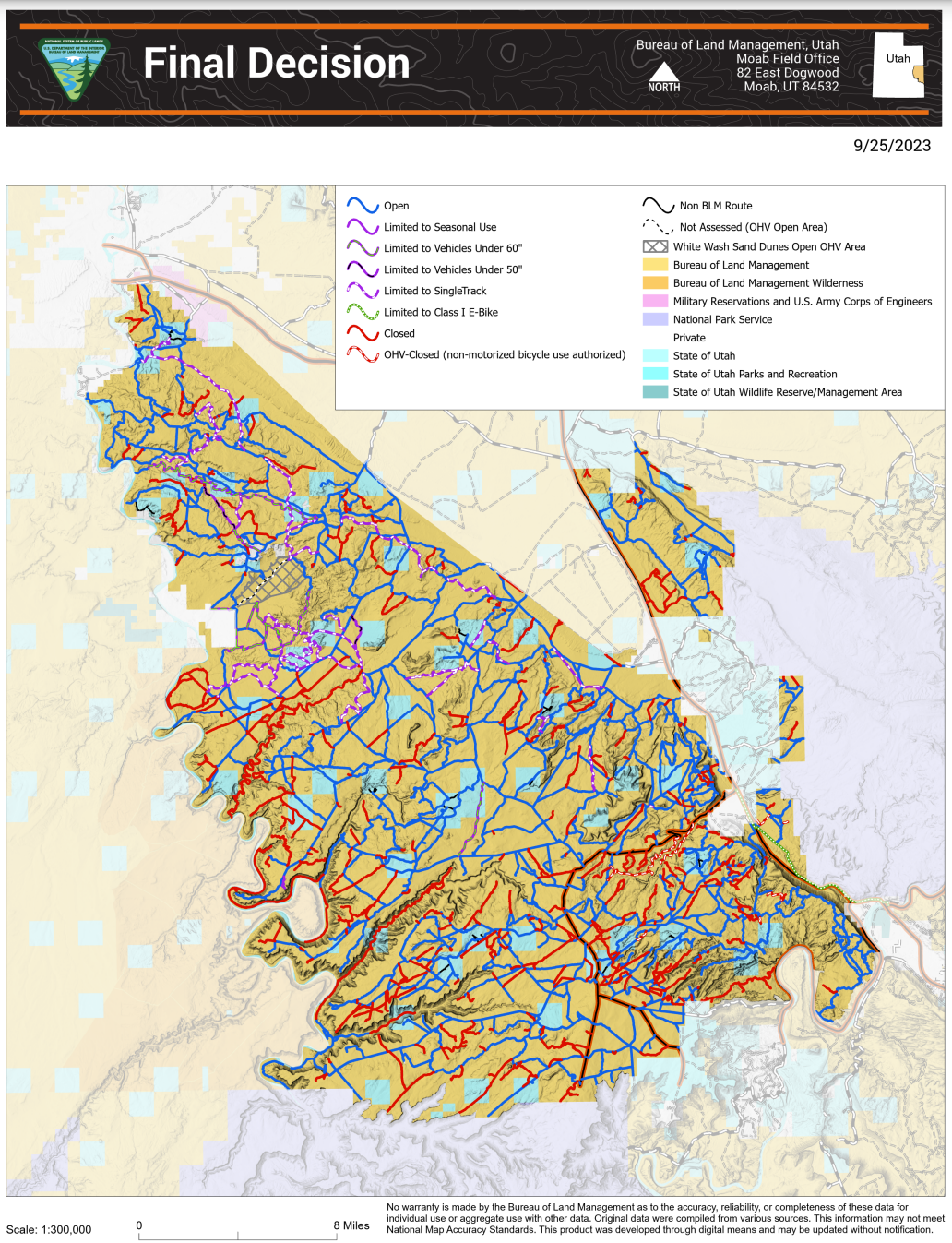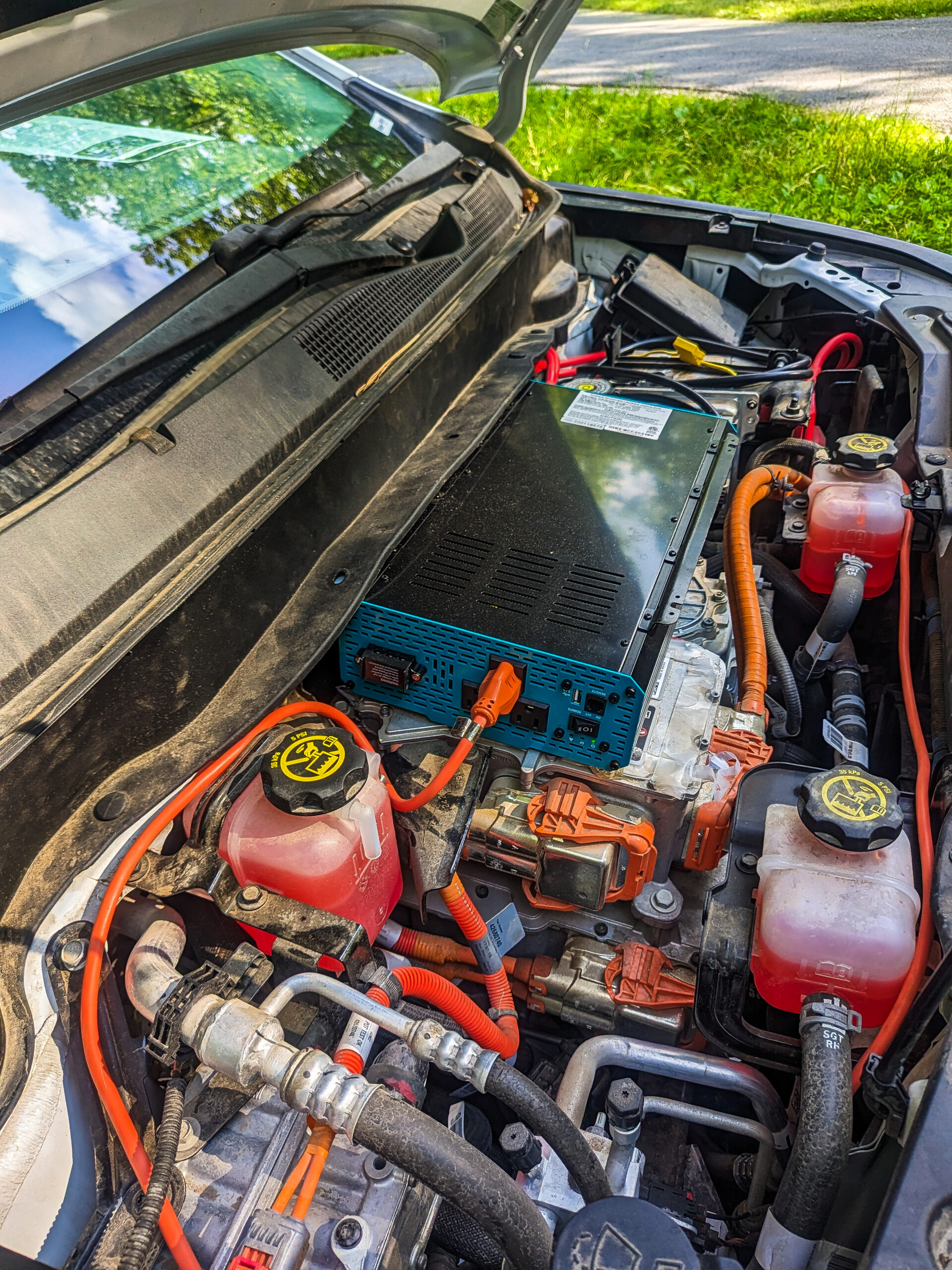Sign up for daily news updates from CleanTechnica on email. Or follow us on Google News!
The Bureau of Land Management’s office in Moab, Utah, recently announced that it’s closing a significant portion of the trails in the area. This, of course, is a decision sure to enrage the off-road community and please environmentalists, but there’s a deeper technology issue at play that the Bureau of Land Management isn’t really considering.
I’m going to start with a basic overview of what BLM’s doing, why they’re trying to be sneaky about it, and what they should be doing to actually manage public lands near not only Moab, but other places popular with off-road adventurers.
The Intentionally Buried Lede
It’s well known in journalism that the spiciest press releases usually show up on Friday afternoon. The spin doctors working for big corporations and government agencies know that they have to release the information, and if they are too quiet, journalists will find the news on Monday and then write stories that everybody reads. So, they go ahead and release the bad news on Thursday or Friday, so that news outlets will publish late on Friday or on Saturday when many readers are taking it easy.
The Bureau of Land Management just released a press release at the end of the week, and it also did its level best to bury the news that it’s closing around ⅓ of the trail miles near Moab, Utah.
For those unfamiliar, Moab has become a global off-roading destination, and the town’s name basically means “off-roading” in several languages these days. If you tell anyone you’re going to Moab, it’s known without any further discussion that you’re either going to go wheeling or go ride your bike.
But, if you read the press release, it’s hard to tell what BLM’s even talking about. Normally, Hanlon’s razor would suggest that this press release is a product of incompetence and not malice, but I don’t think ChatGPT under the direction of a drunk could produce something so uninformative. The only accessible and easy to understand sentence in the whole press release was near the bottom, and reads in part: “96% of the Jeep Safari routes remain available for off highway vehicle use.” That was the only clue that the release had anything to do with trail closures.
Whoever is behind this at BLM knew the decision would get a lot of people mad, and they know their building in Moab has glass windows and walls to deface, plus they’re probably worried about their personal safety and the future of their careers. Some of the Facebook comments suggesting that people dig up the home addresses of BLM employees show that I’m not being sarcastic or exaggerating. People really are big, big mad about this.
In other words, I’d try to bury this if I was in their shoes, too. It’s a cross between carcinogenic toxic waste and a hot potato. The sooner it’s off your desk and on someone else’s, the better.
It takes some work to get details, but if you click several links deeper, and dig through a bunch of badly-named PDF files, you finally find this:
Clearly, this didn’t manage to fly under the radar of the off-roading community. After picking through the documents and finding out what all BLM had decided, Patrick McKay of the CO Offroad Defenders Virtual Crew said:
“There’s no other way to say this. This travel plan is the worst defeat motorized recreation has suffered in decades. SUWA won. Moab is lost. Almost every major trail west of Moab is closed, including Day Canyon Point, Hey Joe Canyon, Mashed Potatoes, Ten Mile Canyon, Hell Roaring Canyon, Mineral Canyon, Hidden Canyon, 7-Up, two of the three overlooks on Deadman Point, and many more. Poison Spider, Golden Spike, 7 Mile Rim, 3D, Buttes and Towers, Hell Roaring Rim, and Metal Masher will stay open but that’s about it.
“All motorized access to the Green River except for county B roads is closed. Most overlooks on the rims of Labyrinth Canyon, 10 Mile Canyon, Taylor Canyon, and South Fork 7 Mile Canyon are closed. For no other reason than the fact the BLM decided to completely reverse course and prioritize non-motorized recreation everywhere there is anything remotely scenic, contrary to the express direction of their own resource management plan. I thought this would be bad, but I never dreamed it would be this bad.”
The Salt Lake City–based Southern Utah Wilderness Alliance (SUWA), on the other hand, was very happy with BLM’s decision.
“Visitors will finally be able to experience stunning Labyrinth Canyon without the noise, dust, and damage that accompanies motorized recreation,” said Laura Peterson, staff attorney with the Southern Utah Wilderness Alliance. “For too long, the BLM has prioritized off-road vehicle use at the expense of Utah’s incredible natural and cultural resources. The Labyrinth Canyon plan represents an important step forward to guide the management of Utah’s public lands and reduce the impacts of off-road vehicle routes in this area.”
To people unfamiliar with today’s off-roading issues, this probably looks like a typical case of people with big trucks in a policy and legal battle with environmentalists. But SUWA did manage to identify an important part of the issue in its press release:
“New ORVs are faster, louder, and more capable of reaching into remote areas than ever before. Labyrinth Canyon is no exception: the area has seen a dramatic increase in motorized recreation over the past decade, with ORV noise and dust disproportionately impacting the majority of public land users.”
And if you dig through the angry Facebook comments dragging BLM for this decision, you’ll find a similar sentiment from some of the off-roaders. Instead of vaguely talking about off-road vehicles being “faster, louder, and more capable of reaching,” they call out the “side-by-sides” as the problem that led to these closures.
“Side-By-Sides” — The Vehicle Technology Involved Here
From the outside, it’s easy to look at a social group and think they’re monolithic. Like the monolith from 2001: A Space Odyssey, off-roading probably all looks the same to many readers, but that couldn’t be further from the truth. If you think about it a bit, there are mountain bikers, mountain bikers on e-bikes, ATVs, UTVs, dirt bikes, Baja trucks, stock 4x4s and SUVs, rock crawlers, and even influencers in “mall crawlers” there to get pics without really taking a trail on (do I sound like Joe Dirt yet?). All of these different off-roaders drive wildly different vehicles in a broad variety of ways.
There are people like me, who are out there just to see the sights and maybe climb some small rough patches. I get the bikes off the rack to go where the crossover can’t go. There are people looking to wheel until something breaks and take on the most wild obstacles. There are people looking for straightaways where they can go really fast, but they slow down in the curves and for obstacles.
And then, there are the “side-by-sides,” or UTVs. Some UTVs are meant for slow-going fun on rough roads, but others are built for maximum speed over any terrain. These can be a lot of fun, but they tend to anger environmentalists, outdoor relaxation types, and other off-roaders all the same. They kick up tons of dust, tear up the trails, and go around corners so fast that people on dirtbikes and bicycles can get run over.
Most other off-road enthusiasts come from a background that values protecting the outdoors for future generations to also enjoy. It’s common to see off-road clubs go out on runs specifically to look for trash to pick up, to care for trails, and to encourage people to not tear up nature beyond the existing trails. Many off-roaders built their own trucks up, and they aren’t going to do anything stupid on purpose to destroy their pride and joy.
But, from what I’ve seen, the side-by-side crowd tends to be party animals, tearing through the desert or forest with music blasting and with cheap LED light sticks flashing and changing colors. While many of them aren’t bad people, many of them seem to throw trash, drive at unsafe speeds around blind turns, and otherwise show that they don’t care about themselves, other people outdoors, or the environment. They didn’t build the vehicle up or do much to earn it, and thus don’t value it the way other segments of the off-road community do.
These vehicles became popular during the last 10–15 years, and they’ve become the perfect excuse for land managers, under pressure from groups like the Southern Utah Wilderness Alliance (that isn’t even based in southern Utah), to close off access to all motorized users.
But, as the off-road community often points out, closure isn’t management. Instead of managing public lands to protect them, they’re closing them off to everyone in a vehicle, responsible or not. This one-size-fits-all policy bans someone carefully and methodically driving a Jeep Wrangler 4xe in electric mode just the same as the owner of a side-by-side who’s out there to go 80 MPH and tear things up while trash blows out.
Technology and thinking can solve these problems, and there’s a role for electric vehicles as part of the solution. In fact, not only Tesla, but Jeep, Ford, GM, and everyone else either has or is about to release an electric truck or SUV. Jeep even has prototypes that it’s been testing in Moab with an electric motor paired with a manual transmission to make it appeal more to old-school enthusiasts.
If speed is the issue, limits need to be set and enforced. If going off trail is the problem, those going off trails need to be punished. If noise is the issue (noise IS an issue in town), they can require mufflers. If pollution is the issue, trails in more sensitive areas can be limited to electric vehicles, e-bikes, and bikes. If trash is the issue, a combination of enforcement and volunteer cleanup days (that off-roaders already do) can alleviate that issue. It’s a policy cafeteria, and land managers can put what works well on their plates.
At absolute minimum, the closed trails should at least be open to e-bikes, if not all EVs capable of going down them.
These reasonable approaches have the benefit of not enraging the public, so real good can be done for the long-haul. But, when knee-jerk reactions to a new form of motoring (the side-by-sides) lead to things that affect responsible visitors to the outdoors, it’s a guaranteed recipe for political blowback that will lead to even less regulation than public lands started with the next time Republicans get in power.
In other words, heavy-handed one-size-fits-all bans and cl0sures are actually worse for the environment in the long run. But, short-sighted environmentalists and lazy land managers don’t seem to have the social skills or strategic foresight to know what they’re doing, but will howl and cry when their f-ing around leads to finding out after a future election.
Instead of acting like they’re the boss, they need to remember that they’re public servants and act like it.
Featured image: A Jeep Wrangler Magneto EV prototype, testing in Moab. Image provided by Jeep.
Have a tip for CleanTechnica? Want to advertise? Want to suggest a guest for our CleanTech Talk podcast? Contact us here.
EV Obsession Daily!
I don’t like paywalls. You don’t like paywalls. Who likes paywalls? Here at CleanTechnica, we implemented a limited paywall for a while, but it always felt wrong — and it was always tough to decide what we should put behind there. In theory, your most exclusive and best content goes behind a paywall. But then fewer people read it!! So, we’ve decided to completely nix paywalls here at CleanTechnica. But…
Thank you!
Tesla Sales in 2023, 2024, and 2030
CleanTechnica uses affiliate links. See our policy here.





